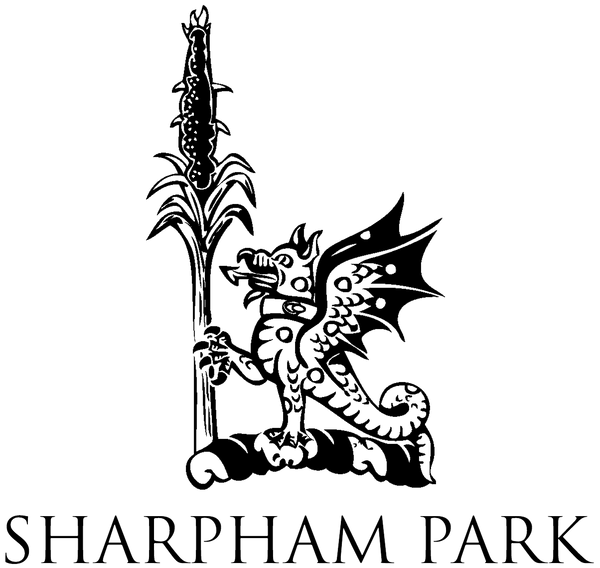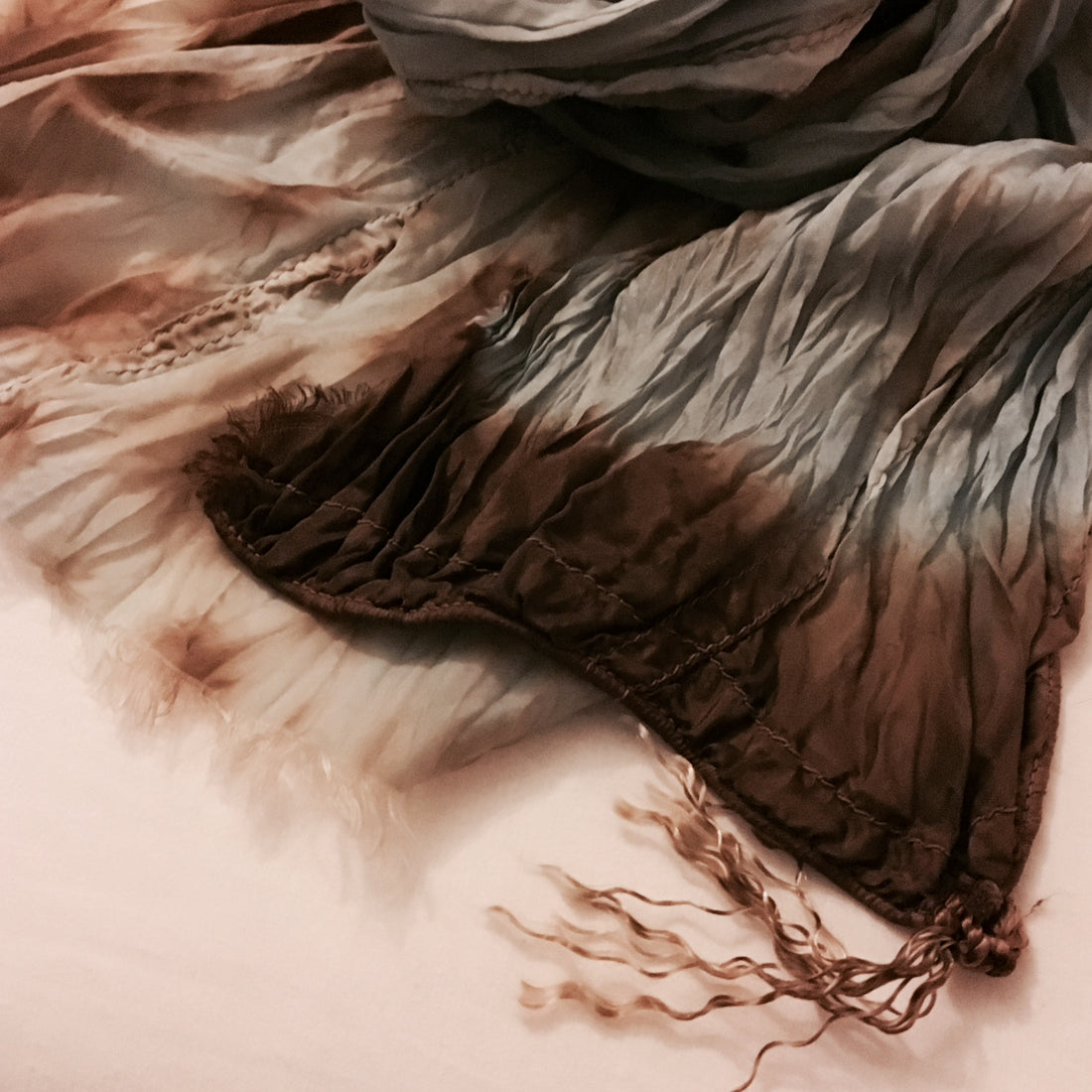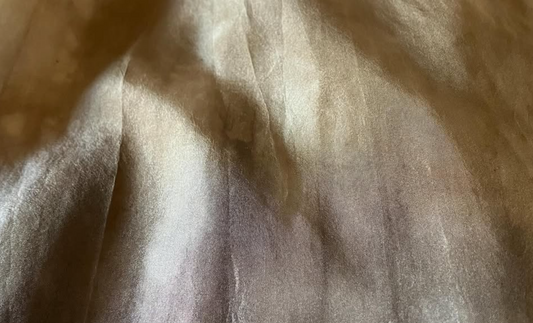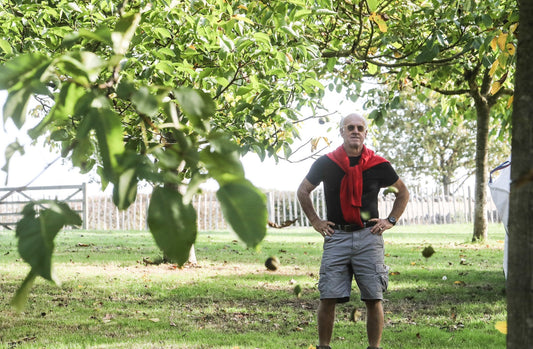Discovering Natural Artistry: A Guest Feature by Cat Lewis
Using Walnut Husks to Make Natural Dye: A Guide for British Organic Walnut Enthusiasts
Introduction
For those passionate about sustainable living and organic products, creating natural dyes from British organic walnuts can be a rewarding and eco-friendly project. Walnut husks, often discarded as waste, possess rich tannins that can produce beautiful, lasting dyes. This guide will walk you through the process of transforming walnut husks into a natural dye, perfect for your fabric and craft projects.

I recently had the pleasure of spending two delightful days with a charming BBC Bristol crew and the ever-engaging presenter Anita Rani. We were filming for the BBC Countryfile Autumn TV special, a project that beautifully marries the splendour of the season with the ingenuity of sustainable artistry.
Our journey began at the breathtaking Sharpham Park Estate, the brainchild of Roger Saul, the visionary founder of Mulberry handbags. This visit was particularly momentous as it marked the estate's inaugural commercial walnut harvest. Amidst the picturesque surroundings, I collected an abundance of walnut husks, which play a pivotal role in my winter collection of sustainable textile products. These husks are not merely remnants but are transformed into a rich, organic dye that breathes new life into my creations. Additionally, they are the key ingredient in my signature walnut w/inc™ – an exquisite, natural brown ink.
Video: Fast-forward to 6mins 53seconds to see Cat's feature on BBC Countryfile at Sharpham Park
What Makes British Organic Walnuts Special?
British organic walnuts are renowned for their superior quality and rich flavour. Grown without synthetic pesticides or fertilisers, these walnuts are not only better for your health but also for the environment. By using organic walnut husks for dyeing, you ensure that your dye is free from harmful chemicals, making it a safer option for both you and the planet.
Benefits of Using Natural Dyes
- Eco-Friendly: Natural dyes reduce the environmental impact associated with synthetic dyes, which often contain toxic substances.
- Non-Toxic: Safe for your skin and respiratory health.
- Sustainable: Utilises waste materials, promoting zero-waste living.
- Unique Results: Every batch of dye is unique, adding a personal touch to your creations.


One of the most gratifying aspects of this process is the zero-waste approach: while I repurpose the husks, the nuts themselves remain intact and ready to be enjoyed as a delicious treat. It's a perfect synergy of sustainability and indulgence.
On the second day, we shifted the setting to my workshop in Cardiff. Here, the magic continued as we delved into the intricate process of creating walnut w/inc™. The day was filled with creative energy as we dyed recycled parachutes, screen-printed a walnut tree, and even had Anita try her hand at writing with the walnut ink and a quill. The hands-on experience brought a tangible sense of connection to the natural materials we were working with.
Materials Needed
- Walnut Husks: Fresh or dried husks from British organic walnuts.
- Water: Preferably soft water to avoid mineral interference.
- Pot: Stainless steel or enamel pot for boiling.
- Fabric: Natural fibres like cotton, wool, or silk.
- Mordant (optional): Alum or iron to enhance dye fixation.
Step-by-Step Guide to Making Walnut Dye
Gathering and Preparing the Husks:
- Collect the husks from your British organic walnuts. Fresh husks can be used directly, while dried husks should be soaked overnight.
- Chop the husks into smaller pieces to facilitate better dye extraction.
Making the Dye Bath:
- Place the husks in a pot and cover with twice as much water.
- Bring to a boil, then simmer for at least an hour. For a more intense colour, simmer longer or let the mixture sit overnight.
- Strain the liquid to remove husk fragments, leaving you with a rich, brown dye.
Preparing the Fabric:
- Thoroughly wash your fabric to remove any impurities that might interfere with the dye absorption.
- If using a mordant, pre-treat your fabric according to the mordant's instructions.
Dyeing Process:
- Submerge the fabric in the dye bath, ensuring it is fully saturated.
- Simmer the fabric in the dye for at least an hour. For deeper colours, allow the fabric to soak overnight.
- Stir occasionally to ensure even dyeing.
Finishing Up:
- Remove the fabric and rinse thoroughly in cold water until the water runs clear.
- Hang to dry in a shaded area to prevent colour fading from sunlight.
Tips for Best Results
- Experiment with Mordants: Different mordants can alter the final colour of the dye, offering a range of hues from a single dye bath.
- Layering: Repeatedly dyeing the fabric can produce richer, deeper colours.
- Test Samples: Always test a small piece of fabric first to see how the dye takes.
The response to the programme has been overwhelmingly positive. I have been inundated with heartwarming comments, a surge of interest in my work, and several special orders that have added a new layer of excitement to my craft.
Creating natural dyes from British organic walnut husks is not only an environmentally friendly choice but also a way to add unique, handcrafted beauty to your projects. This process, rooted in sustainability and creativity, aligns perfectly with the ethos of those who appreciate organic and natural living. Give it a try, and you might discover a new passion for natural dyeing that adds a personal touch to your home and wardrobe.
For more tips and guides on using British Organic Walnuts, subscribe to our newsletter or visit our blog regularly. Happy dyeing!




